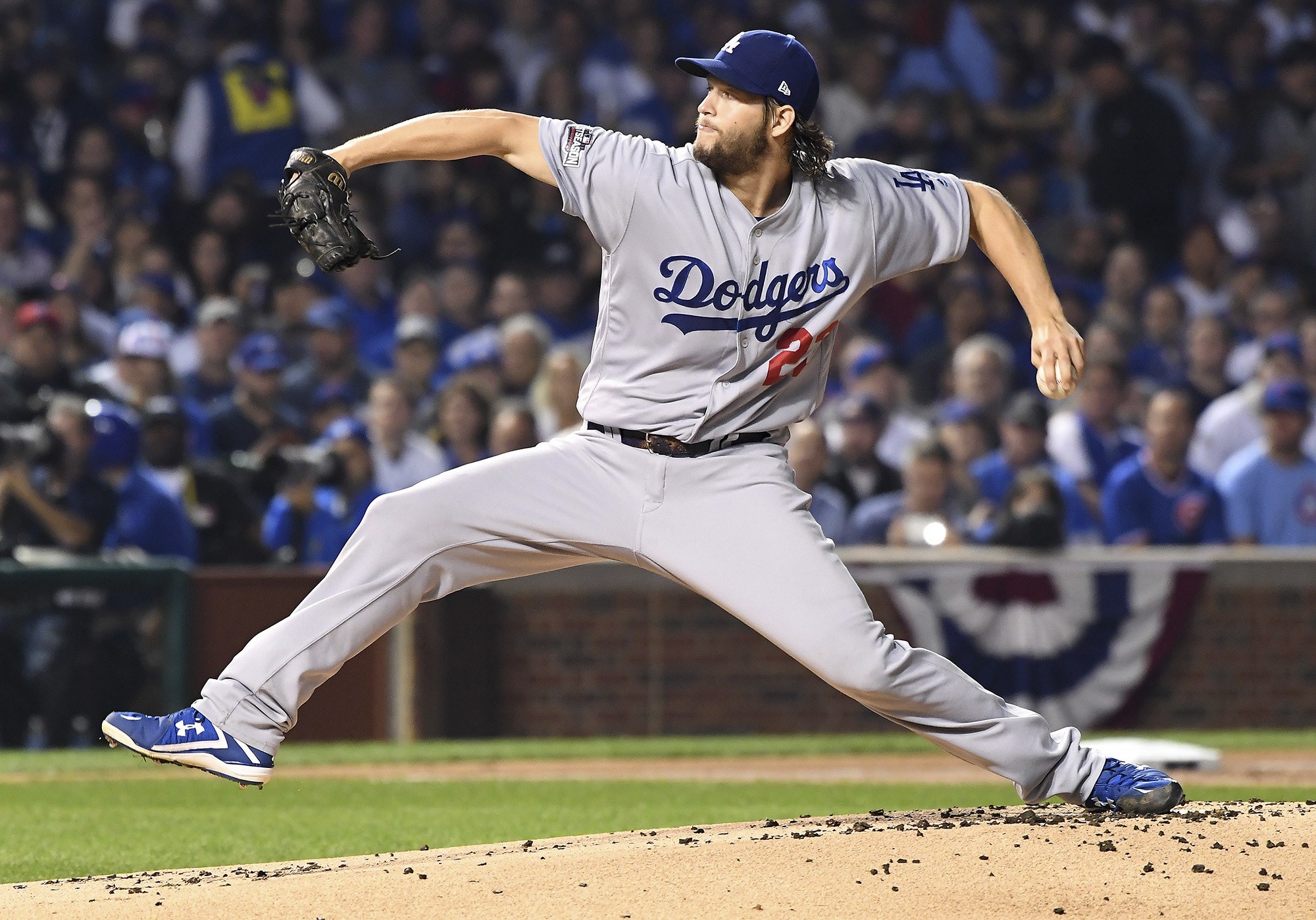CHICAGO — He was not their last line of defense, not in the second game of the National League Championship Series, but he was their best line of defense. The Los Angeles Dodgers required all that Clayton Kershaw had to give on Sunday. A night after a late-game catastrophe cost his team the opener, Kershaw quieted the Chicago Cubs for seven scoreless innings in a series-evening 1-0 victory at Wrigley Field.
Kershaw is this team’s firewall. His left arm stanches their wounds. He has been a starter this October and he has been a closer. The Dodgers have won all four games in which Kershaw has pitched this postseason. They’ve lost all the others. The team hopes to buck that trend in Game 3 on Tuesday at Dodger Stadium.
Kershaw played his part with aplomb in Game 2. Chicago managed only two hits. No Cub advanced beyond second base. Kershaw handed the game over to closer Kenley Jansen in the eighth inning. Jansen notched a six-out save, protecting a lead created by an Adrian Gonzalez homer in the second inning.
Kershaw did not give up a hit until the fifth inning. He did not reach a three-ball count until the sixth. He survived the seventh inning, the setting for so much of his October heartbreak, when Cubs second baseman Javier Baez smashed a line drive into Joc Pederson’s glove at the warning track.
On Sunday, Kershaw took the mound for the third time in five days. He helped keep the Dodgers’ season alive with a 110-pitch performance on Tuesday in Game 4 of the NL division series against Washington. Two days later, he forced himself into the clincher to pick up the last two outs. He elected to treat that outing, which lasted seven pitches, as an intense, between-start bullpen session.
A heavy October workload for Kershaw is nothing new. But there is still the specter of concern about his back. Roberts insisted that the team does not harbor fears about the lingering effect of his herniated disk.
“There’s a lot of bullets left in that arm for this season,” Roberts said before the game.
The injury prevented Kershaw from collecting baseball’s earned-run average title. He finished the season with a 1.69 ERA, but did not throw enough innings to qualify. So the crown belonged to Kyle Hendricks, the owner of a 2.13 ERA and Chicago’s Game 2 starter.
Hendricks relies upon deception. He generates soft contact with his two-seam fastball, which offsets his pedestrian velocity. His arsenal leaves only a small margin for mistakes, as Hendricks learned in Sunday’s second inning.
Gonzalez had tied the score in the top of Saturday’s madcap eighth inning. Now he gave his team its first lead of the series. Hendricks pumped a 90-mph sinker. Gonzalez timed it well, and bashed a solo homer beyond the center-field fence.
The lead was Kershaw’s to hold. His opponents were curious about his condition. Hours before the first pitch, Cubs manager Joe Maddon speculated Kershaw might not possess his usual stamina.
“I anticipate good from him,” Maddon said. “But how sustainable is it?”
Kershaw showed no evidence of fatigue at the start. He painted the outer half of the plate with a 95-mph fastball to strike out third baseman Kris Bryant in the first inning. He found 95-mph once more on a second-inning strikeout of Baez. In the third, the Cubs adopted a curious strategy: Keeping their bats on their shoulders, trying to raise his pitch count. Kershaw finished the inning in 10 pitches.
The fourth inning contained a scare. Cubs first baseman Anthony Rizzo turned on a fastball and pulled a deep drive down the right-field line. The ball drifted foul and landed on Sheffield Avenue. Kershaw received a fresh ball from the umpire and forced Rizzo to ground out three pitches later with a curveball.
Kershaw recorded a hit before any Cub did. He slapped a single in the fifth. His teammates left him stranded at second base, so he returned to his dugout still protecting a one-run lead.



